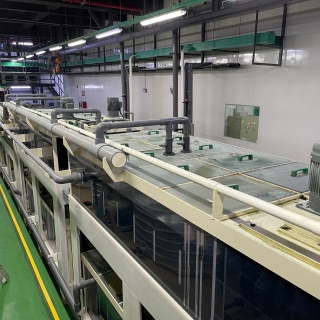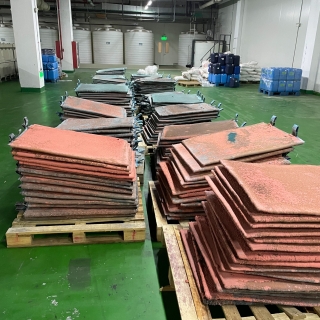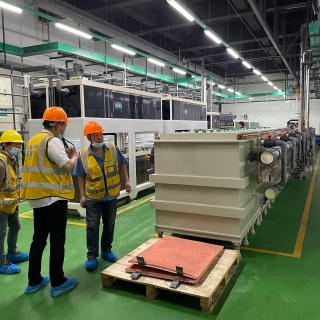Product Introduction
Alkaline etching process is a common PCB manufacturing process for circuit formation. When the bottom barrier layer material is metal, the alkaline type ammonium copper is suitable for the etching solution because it will not attack metal barrier layer. The principle is that copper chloride will chelate with ammonia (CuCl2 + NH3 Cu(NH3)4Cl2), and the complex possess etching ability toward metallic copper by the following reaction: Cu(NH3)4Cl2 ) + Cu 2Cu(NH3)2Cl. However, the Cu2+ complex does not have etching activity. To ensure the etching ability, NH4Cl and NH3 should be added, and the solution will react with the oxygen gas in the ambient environment. Therefore, the Cu2+ complex will be oxidized back to the Cu+ complex (2Cu(NH3)2Cl+2NH4Cl +2NH3+1/2O2 2Cu(NH3)4Cl2+H2O), and the etching activity will be regenerate.
When continuously replenishing NH4Cl and NH3, the Cu2+ concentration in the solution gradually increases, and eventually reaches nearly saturated concentration, which becomes the alkaline wastewater. The method to recover Cu from such wastewater is by adding chemical like sulfuric acid to precipitate copper sulfate, and the residual contamination like ammonium should go through wastewater treatment. However, these residual chemicals are actually effective. The reason for losing etching activity is simply the copper concentration is saturated, and can no longer provide sufficient etching ability.
Based on the bottleneck of conventional method, Waste Recovery Technology develops the on-line electrowinning recycling system for alkaline etching process to realize the recovery of metallic copper and effective chemical, and re-use the wastewater back to the production line.
The on-line alkaline recovery system is based on the solvent-extraction system and electrowinning system. Firstly, the alkaline wastewater is reacted with the solvent-extraction module, and the ammonium copper complex will selectively be extracted into the oil phase, so the copper concentration within the wastewater is lower. The residual chemical within the wastewater remained effective, and its etching activity will be regenerated by adding specific chemical such as NH4Cl, NH3, and alkaline additive. Eventually, the wastewater with low Cu concentration and sufficient activity will be send back to the production line for use. The Cu extracted within the oil phase will be regenerated by sulfuric acid, and becomes copper sulfate solution, which is transmitted to electrowinning system to recover metallic copper.
Waste Recovery Technology’s on-line electrowinning system has following advantages:
- Can recover the Cu ions in the copper chloride wastewater into metallic copper, not traditional Cu-related compound.
- Can re-use the solution back to the production line, and reduce the cost of buying oxidizing agent or necessary chemical.
- Waste Recovery Technology can offer stable etching solution for the production line.
- Compared to adding new etching chemical, the etching rate of our solution is more stable since the floatation of Cu concentration is lower.






